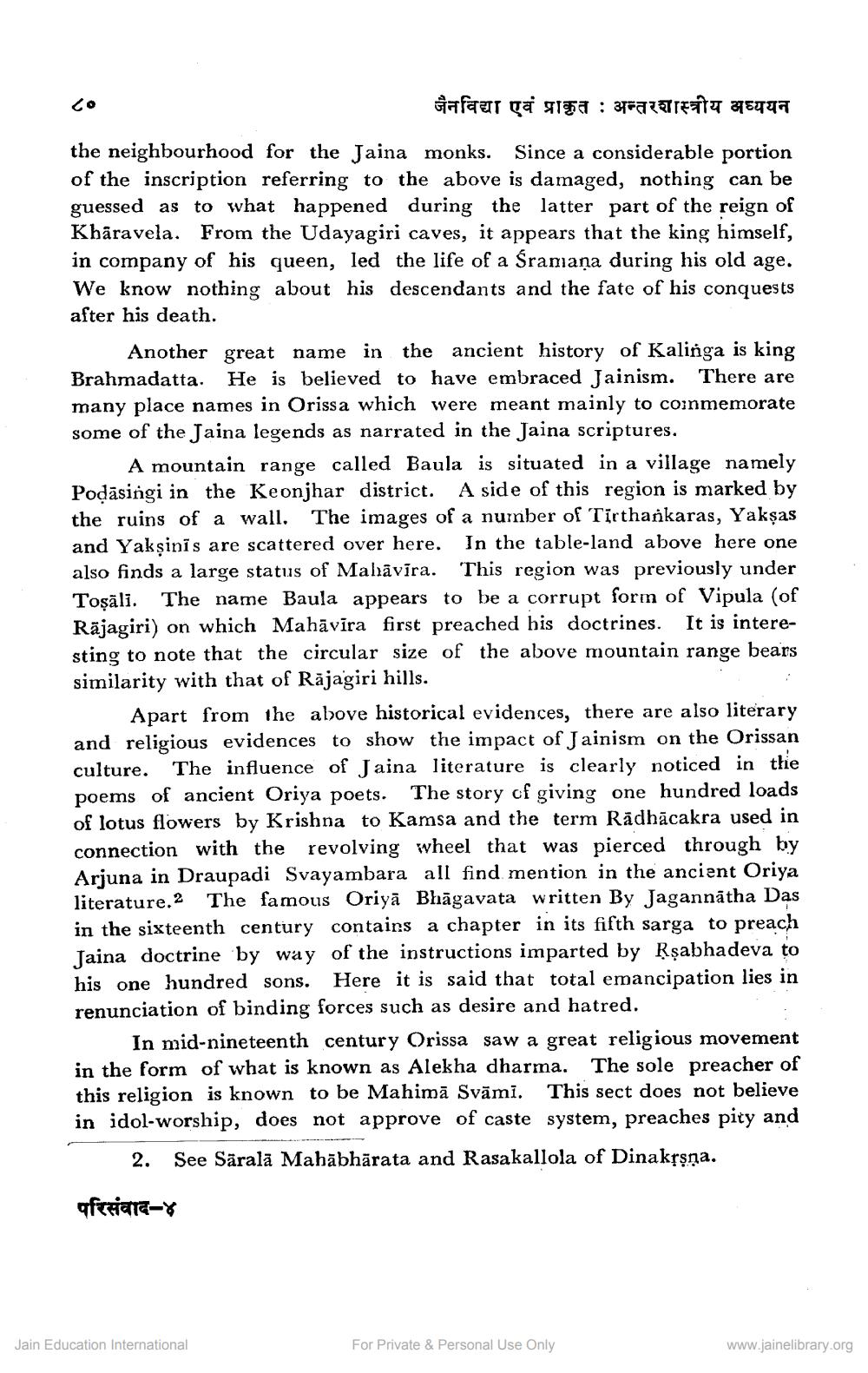Book Title: Emperor Kharavela And Jaina Tradition In Orissa Author(s): Krishna Chandra Acharya Publisher: Z_Jain_Vidya_evam_Prakrit_014026_HR.pdf View full book textPage 2
________________ co जैनविद्या एवं प्राकृत : अन्तरशास्त्रीय अध्ययन the neighbourhood for the Jaina monks. Since a considerable portion of the inscription referring to the above is damaged, nothing can be guessed as to what happened during the latter part of the reign of Khāravela. From the Udayagiri caves, it appears that the king himself, in company of his queen, led the life of a śramaņa during his old age. We know nothing about his descendants and the fate of his conquests after his death. Another great name in the ancient history of Kalinga is king Brahmadatta. He is believed to have embraced Jainism. There are many place names in Oriss a which were meant mainly to conmemorate some of the Jaina legends as narrated in the Jaina scriptures. A mountain range called Baula is situated in a village namely Podāsingi in the Keonjhar district. A side of this region is marked by the ruins of a wall. The images of a number of Tirtharkaras, Yaksas and Yaksinis are scattered over here. In the table-land above here one also finds a large status of Malāvīra. This region was previously under Toșāli. The name Baula appears to be a corrupt form of Vipula (of Rājagiri) on which Mahāvīra first preached his doctrines. It is interesting to note that the circular size of the above mountain range bears similarity with that of Rajagiri hills. Apart from the above historical evidences, there are also literary and religious evidences to show the impact of Jainism on the Orissan culture. The influence of Jaina literature is clearly noticed in the poems of ancient Oriya poets. The story of giving one hundred loads of lotus flowers by Krishna to Kamsa and the term Rādhācakra used in connection with the revolving wheel that was pierced through by Arjuna in Draupadi Svayambara all find mention in the ancient Oriya literature. The famous Oriyā Bhāgavata written By Jagannātha Das in the sixteenth century contains a chapter in its fifth sarga to preach Jaina doctrine by way of the instructions imparted by Rşabhadeva to is one hundred sons. Here it is said that total emancipation lies in renunciation of binding forces such as desire and hatred. In mid-nineteenth century Orissa saw a great religious movement in the form of what is known as Alekha dharma. The sole preacher of this religion is known to be Mahimā Svāmi. This sect does not believe in idol-worship, does not approve of caste system, preaches picy and 2. See Sāralā Mahābhārata and Rasakallola of Dinakrsna. परिसंवाद-४ Jain Education International For Private & Personal Use Only www.jainelibrary.orgPage Navigation
1 2 3 4
